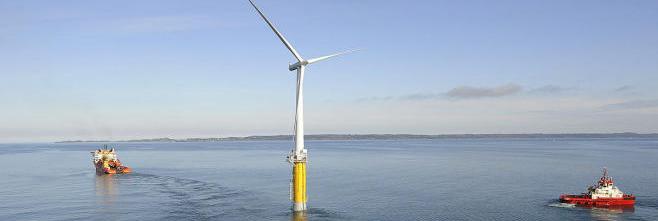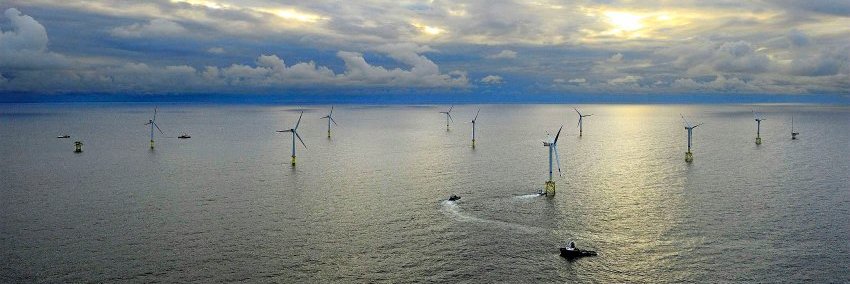Work Package 6. Condition and Structural Health Monitoring.
A very critical issue for very large offshore wind turbines is the structural integrity of the rotor blades, tower and
floater, and their remote maintenance. On the one hand, the wind turbines of the future will be much bigger than
today. Especially the rotor blades; which will have a length of 90 m and more. The exposure to structural failure
is much higher than with smaller blades. Additional to that, the environmental conditions on the sea are very
harsh, that means the loads on to blades and tower are much higher. On the other hand, the accessibility of
an offshore wind turbine is restricted due to sea and weather conditions and the availability of supply vessels.
Hence, integrated structural health and condition monitoring is a prerequisite of complex remote maintenance
strategies for structural parts of a wind energy converter. Structural health monitoring, condition-dependent and
predictive maintenance combined with long term planning of repair measures is key to ensuring economical
viability of very large offshore turbines.
WP6 aims to implement a fully structure-integrated structural health monitoring (SHM) system for rotor blades
and critical parts of tower and floater. Starting with base conditions of the blades ensured by NDT-methods, a
model-based and integrated SHM system should lead to a condition-dependent and predictive maintenance.
Monitoring conceptions enabling the assessment of damage and remaining life cycles prior to failure will play
a decisive role. The turbine proposed here is therefore equipped with a sensor net and a structural health
monitoring system far surpassing the current state-of-the-art.








